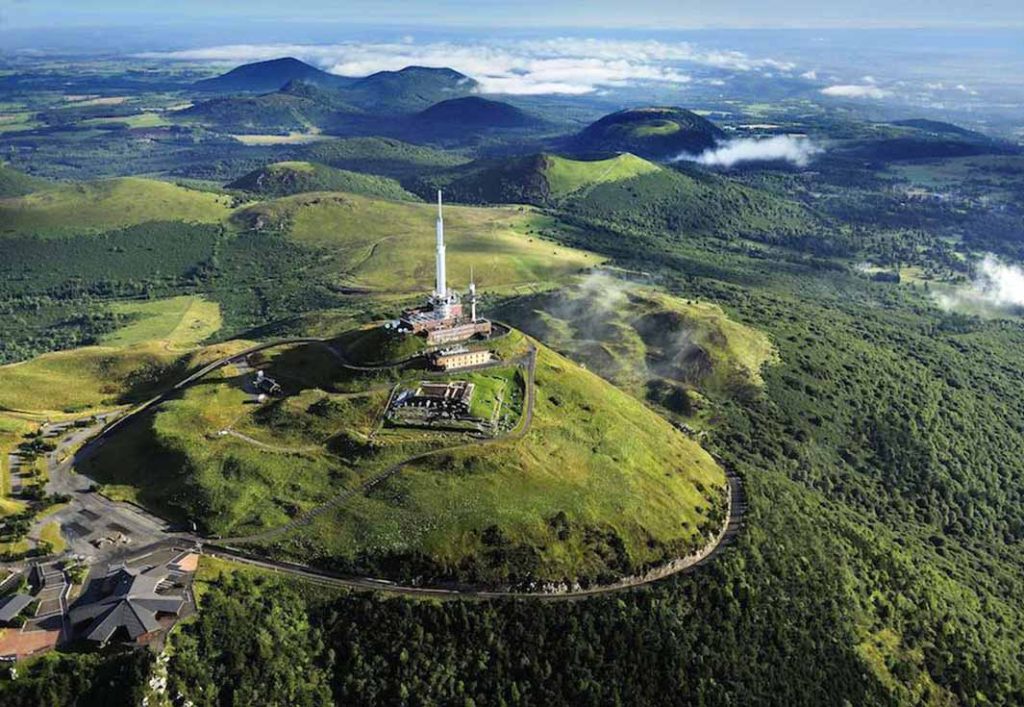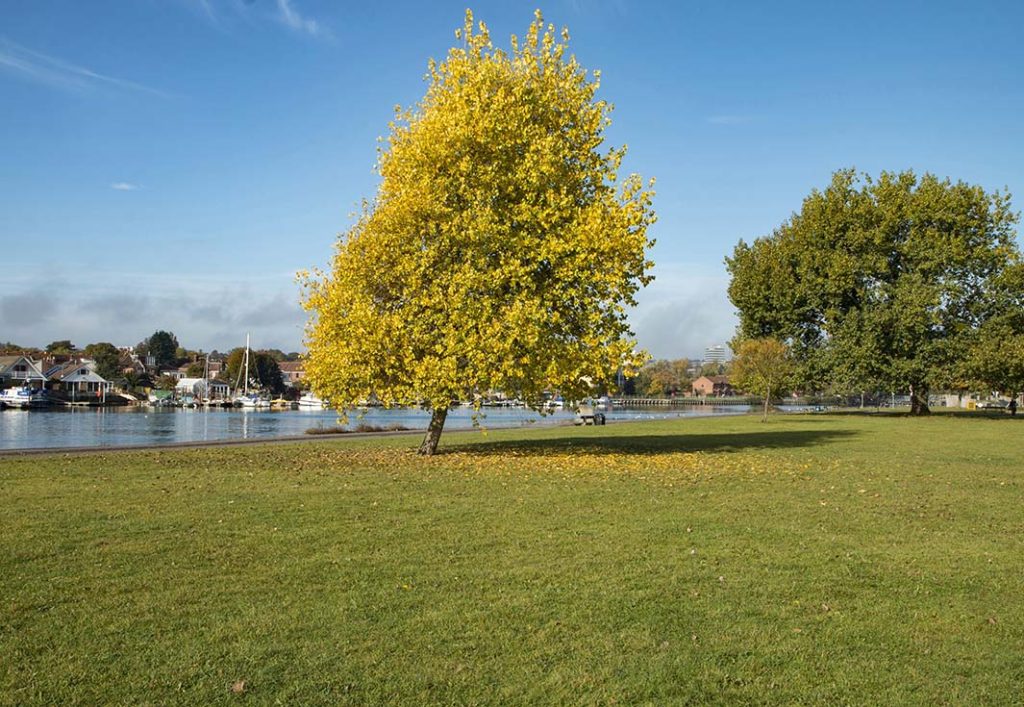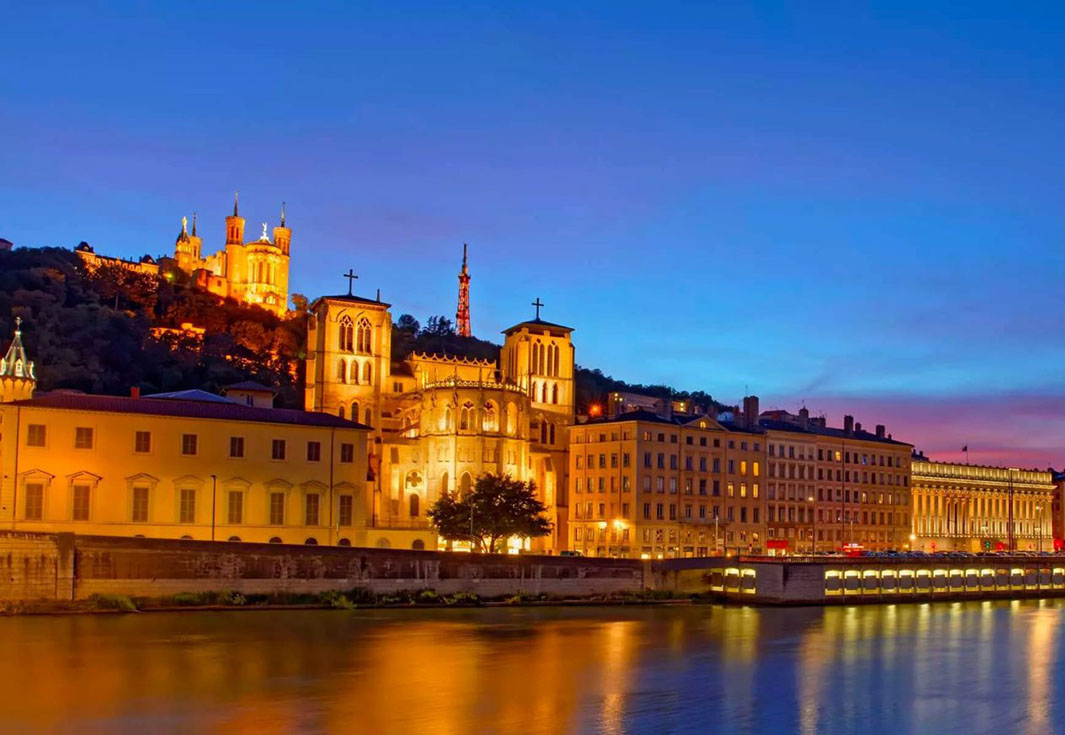1. Awakening in the Heart of Auvergne
The day began early in Clermont-Ferrand, a city that rests quietly at the foot of ancient volcanic giants. The first thing that greeted me through the open window of my small hotel room was a crisp breeze rolling down from the Chaîne des Puys. Morning light filtered through light gray clouds, illuminating the unmistakable silhouette of the Puy de Dôme, rising in the distance like the green crown of the Massif Central. Its presence is magnetic. I had read that this particular volcano, dormant but never forgotten, is both a geological marvel and a spiritual emblem in Auvergne. Seeing it in person, standing proud above the plains and city rooftops, lent those words immediate weight.
After a quick breakfast—coffee, croissant, and the kind of rich, creamy yogurt the French seem to perfect without effort—I packed my backpack: water bottle, layered clothing, compact binoculars, journal, and a modest lunch sourced from the nearby marché. I made my way to the Gare de Royat-Chamalières to catch the shuttle to the base of the Puy de Dôme. The route itself winds gently upward, passing fields still damp with dew and villages clustered like stories waiting to be told.
2. The Base: Land of Quiet Expectations
At the foot of the volcano, the atmosphere felt charged—not with excitement, but something quieter and deeper, like reverence. Even before beginning the hike, it was clear that the Puy de Dôme is no ordinary mountain. In the ancient world, it was considered sacred. Jupiter had a temple here. Roman pilgrims would climb it with offerings, their footsteps pressed into the same stone paths I would soon follow.
The Visitor Center is modern and unobtrusive. Inside, panels explain the volcano’s formation—part of the 80-kilometer-long Chaîne des Puys, a UNESCO World Heritage Site formed over 95,000 years. Basalt, pumice, scoria—the language of fire etched in earth. But the geology, as fascinating as it is, was not what pulled me forward. It was the curve of the trail ahead, lined with dense forests and crowned with a summit wrapped in clouds.
3. Starting the Trail: The Chemin des Muletiers

The Chemin des Muletiers trail begins on the southern slope. Historically, this was the path used by muleteers, and the name stuck. It’s a 6-kilometer round trip with around 350 meters of elevation gain. Not particularly grueling, but steady, relentless, and surprisingly exposed once the trees begin to thin. The initial climb was shaded by beech and chestnut, the trail wide and stony. Birdsong, the occasional rustling of small mammals, and my own breathing formed the soundtrack.
A family passed me early on, children scrambling ahead like goats while their parents trudged behind, already sweating. Further up, an older couple moved with quiet precision, hiking poles clicking like metronomes on the stone. There was camaraderie on the trail, not forced but organic. We shared nods, quiet smiles, and in some cases, exchanged water or fruit. There was no need to speak extensively—everyone understood the pilgrimage.
4. Into the Sky: The Tree Line Breaks
Halfway up, the tree line broke. The forest gave way to low scrub and volcanic grasses. The air changed here, thinner and drier, but not unpleasant. The views opened like a curtain parting at the theater. To the south, the full chain of the Puys unfurled: the Puy de Côme, the twin Puy de Lassolas and Puy de la Vache, each one a fossilized ember in the grand fire of prehistory.
Here, I paused. Not just for breath, but for silence. The wind was constant, a steady presence. Wildflowers clung to the edges of the trail, defiant. Butterflies hovered and darted, seemingly indifferent to the altitude. There’s a loneliness on this upper trail, but it’s not unwelcome. It sharpens perception. I noticed how the basalt underfoot had warmed under the sun, how the clouds moved more quickly across the open sky, how the voices of hikers below drifted upward in waves, then dissipated.
5. The Summit: History in the Clouds
Reaching the summit was not a moment of triumph, but of arrival. The observation deck is modest, respectful of the mountain. There’s a weather station here, a relay tower, and the remnants of the Temple of Mercury—a structure the Romans built in the 2nd century CE. Its basalt blocks are enormous, and they’ve been partially restored, giving an impression of scale. To stand there, wind pressing against my jacket, and touch those stones—still bearing the chisel marks of Roman hands—was humbling.

On the edge of the platform, a brass orientation table lays out the panorama in all directions. Clermont-Ferrand to the east, its buildings like children’s blocks; the Limagne plain rolling away in orderly farmland; the Massif du Sancy to the south, snow-dusted and stoic. Far to the west, the land lifts into the rugged hills of Corrèze and Cantal.
I took my lunch here—hard cheese, cured ham, a crust of bread, and an apple—sitting on the low stone wall that edges the summit path. Every bite felt earned. Every glance revealed new details. Paragliders occasionally soared above, their shadows skimming the volcano’s flanks like birds of prey. I watched one launch, his body briefly suspended between heaven and rock, before he caught the wind and vanished in a graceful arc toward the plains.
6. The Descent: A Different Journey
Descending was, in some ways, more challenging. The pressure on knees and ankles, the constant need for footing, the shift from quiet summit reflection to the re-entry into sound and motion. But the trail looked different now—familiar, yes, but altered by the upward journey. I passed hikers on their way up and found myself offering encouragement, just as others had done for me.
One stretch of the trail featured exposed lava flows—jagged, black-brown ridges like the frozen fingers of some ancient god. I ran my hand along their surface and felt how time does not always soften but preserves, crystallizes. The geology of this region is not just about eruptions; it’s about endurance.
Birds grew louder as I approached the forest again, and the smell of pine returned. The late afternoon sun filtered through the canopy, casting the trail in golden shadow. I lingered where the trees met the open slope, reluctant to re-enter the mundane world. The mountain, for all its height, does not tower. It welcomes. It teaches without preaching.
7. Evening in Clermont-Ferrand
Back in the city, everything felt sharper, more vibrant. The dark volcanic stone of the Cathédrale Notre-Dame-de-l’Assomption seemed warmer in the evening light. I sat outside a café near Place de Jaude and ordered a local bière ambrée. Its earthy bitterness was perfect. Locals were out in clusters—young couples, retirees, students. There’s an ease here, an old-world rhythm that persists.
I watched the statue of Vercingetorix cast its long shadow as the sun dipped behind the Puy de Dôme. That same volcano, now distant and softened by haze, still watched over the city. It never disappears. It remains fixed in the background of daily life, quietly reminding everyone that the land they walk is ancient, sacred, and full of fire.
Later, in my room, I wrote down what I could remember: the curve of the summit trail, the voices lost to wind, the taste of cheese at 1,465 meters. Some places give more than memories; they embed themselves in the body. Muscles remember the climb, lungs the thin air, eyes the vastness. Sleep came easily, as if the mountain had released me only on the condition that I would return.




